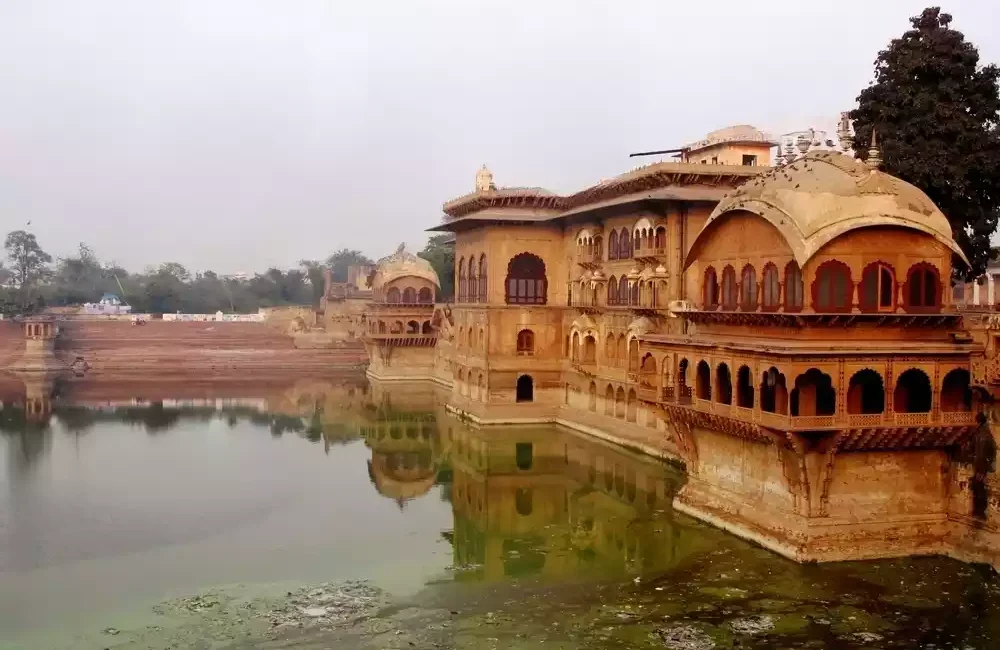Exploring Bharatpur: A Comprehensive Guide
Introduction to Bharatpur
Bharatpur, a historic city located in the Braj region of Rajasthan, India, is renowned for its rich cultural heritage, vibrant history, and stunning natural beauty. As the district headquarters of Bharatpur district, it holds a significant place in the historical and cultural tapestry of Rajasthan. This article provides an in-depth exploration of Bharatpur, covering its demographics, culture, geography, cuisines, history, notable personalities, and administration.
Demography of Bharatpur
Bharatpur district has a diverse population, reflecting a blend of various ethnic groups and communities. According to the latest census data, the district has a population of approximately 2.5 million people. The population density stands at around 590 individuals per square kilometer. The literacy rate is commendable, with a significant portion of the population being literate.
Population Composition
The district's population is predominantly rural, with about 75% residing in villages. The urban population is concentrated mainly in the city of Bharatpur and other towns like Deeg, Kaman, and Nadbai. The gender ratio is fairly balanced, with a slight male predominance.
Cultural Heritage
Bharatpur is a cultural melting pot, where traditions and customs have been preserved and celebrated for centuries. The district is famous for its festivals, folk music, and dance forms that reflect the vibrant culture of Rajasthan.
Festivals
The most celebrated festival in Bharatpur is the Brij Festival, held in honor of Lord Krishna, reflecting the district's strong association with the Braj region. Other significant festivals include Diwali, Holi, and Teej, which are celebrated with great enthusiasm and fervor.
Folk Arts
Bharatpur is known for its folk dances such as Raslila and Brij Holi, which depict the life and love of Lord Krishna. Traditional music instruments like the Dholak, Harmonium, and Sarangi are integral to these performances.
Geographic Overview
Bharatpur district spans an area of approximately 5,066 square kilometers. It is bordered by the states of Uttar Pradesh and Haryana, and by the districts of Alwar, Dholpur, and Karauli within Rajasthan.
Topography
The terrain of Bharatpur is predominantly flat with some undulating hills in the northern part. The district lies in the fertile Indo-Gangetic plains, which support extensive agricultural activities.
Climate
Bharatpur experiences a semi-arid climate, with hot summers, a brief monsoon season, and mild winters. The average annual rainfall is about 650 mm, predominantly occurring between June and September.
Cuisine of Bharatpur
Bharatpur's cuisine is a delightful blend of traditional Rajasthani flavors and influences from neighboring regions. The food here is known for its robust flavors and use of spices.
Traditional Dishes
Some of the must-try dishes include Dal Baati Churma, a quintessential Rajasthani dish, and Kachori, a popular snack. The district is also known for its sweets like Ghevar and Jalebi.
Culinary Influences
The cuisine of Bharatpur has been influenced by Mughal and Maratha culinary traditions due to historical invasions and settlements. This fusion is evident in the district's rich and diverse food culture.
Historical Significance
Bharatpur boasts a fascinating history that dates back to the 18th century. It was established as a princely state by Maharaja Suraj Mal in 1733 and played a crucial role in the history of Rajasthan and India.
Founding and Early History
Maharaja Suraj Mal, the founder of Bharatpur, was a prominent Jat ruler known for his administrative acumen and military prowess. Under his leadership, Bharatpur emerged as a powerful kingdom, often referred to as the "Eastern Gateway to Rajasthan."
Colonial Era
During the British colonial period, Bharatpur was one of the most significant princely states in Rajasthan. It maintained a semi-autonomous status and played a crucial role in regional politics.
Notable Personalities
Bharatpur has produced several notable personalities who have contributed significantly to various fields, including literature, politics, and the arts.
Maharaja Suraj Mal
Maharaja Suraj Mal, the founder of Bharatpur, is revered as a great warrior and an astute ruler. His legacy is celebrated through various monuments and stories that highlight his contributions to the region.
Poet Raskhan
Raskhan, a renowned poet of the Bhakti movement, hailed from Bharatpur. His devotion to Lord Krishna and his poetic works are integral to the literary heritage of the district.
Administration and Governance
The administrative structure of Bharatpur district is well-organized, ensuring efficient governance and development.
District Administration
The district is divided into several administrative subdivisions, each headed by a Sub-Divisional Magistrate (SDM). The district collector oversees the overall administration and development activities.
Local Governance
Local governance in Bharatpur is facilitated through Panchayati Raj institutions, which play a crucial role in rural development and community participation. The district also has a municipal corporation that manages urban areas.
Tourism in Bharatpur
Bharatpur is a prominent tourist destination, attracting visitors with its rich historical sites, natural beauty, and cultural attractions.
Keoladeo National Park
One of the major highlights of Bharatpur is the Keoladeo National Park, a UNESCO World Heritage site. It is a haven for bird watchers, housing over 370 species of birds, including migratory birds like the Siberian Crane.
Lohagarh Fort
The Lohagarh Fort, also known as the Iron Fort, is another major attraction. Built by Maharaja Suraj Mal, the fort is famous for its robust construction and historical significance.
Deeg Palace
Deeg Palace, located near Bharatpur, is renowned for its beautiful gardens, palaces, and fountains. It served as a summer resort for the royal family of Bharatpur.
Conclusion
Bharatpur is a district that encapsulates the essence of Rajasthan's rich cultural heritage, historical significance, and natural beauty. From its vibrant festivals and traditional cuisine to its historical landmarks and natural attractions, Bharatpur offers a unique and enriching experience for visitors and residents alike. Whether you are a history enthusiast, a nature lover, or a cultural explorer, Bharatpur has something to offer everyone.
This comprehensive guide to Bharatpur aims to provide readers with a detailed and engaging overview of the district. By highlighting its various facets, from demography and culture to history and tourism, we hope to enrich your understanding and appreciation of this remarkable region in Rajasthan.
